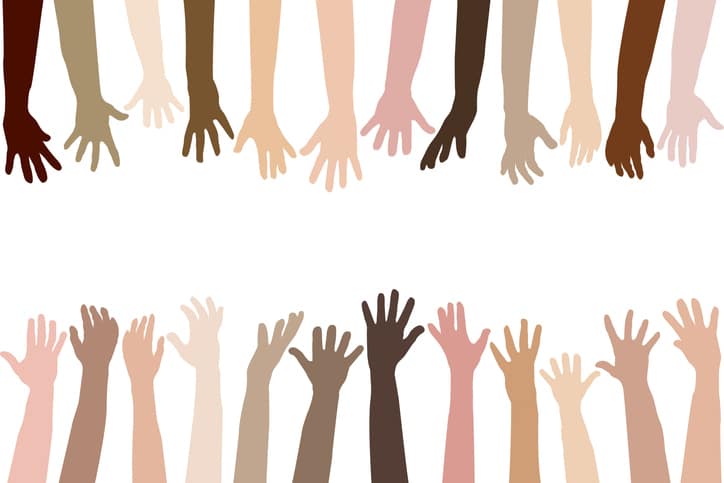
Want to know how much website downtime costs, and the impact it can have on your business?
Find out everything you need to know in our new uptime monitoring whitepaper 2021







Over the past few years, there’s been a lot of media attention around diversity in the workplace; especially gender-related diversity. With the likes of broadcaster giants the BBC coming under fire for huge gender pay gaps between their male and female presenters, the diversity issue has been gaining more and more attention.
Unfortunately, we’ve seen time and time again that women are getting paid less than men for doing the same roles. Studies show that even getting to those high managerial roles proves extra difficult if you’re female. But this isn’t the only issue with diversity we are facing, especially in our own tech industry. BAME employees are also hugely underrepresented, even more so in managerial positions and this number doesn’t seem to be increasing. So what is the reason behind this lack of diversity?
The BCS Diversity Report 2020 found that age and gender (both 22%) are believed to be the top two diversity barriers to getting a first job in IT. When it comes to progressing a career in IT, gender is clearly perceived as the biggest diversity barrier (29%) followed by age (19%) and ethnicity (11%). Many movements around Women in Tech have surfaced over the past 5 years with the aim of helping more women overcome these barriers to get a career in tech.
Interestingly, it’s not for lack of opportunities in the tech industry; adverts for job roles in technology and digital in the UK have increased by 36% since June 2020, according to research by Tech Nation and the government’s Digital Economy Council. Digital jobs in the UK account for 9% of the workforce, employing around 2.93 million people making it a bigger employer than sectors like Hospitality(1.3m), Construction (1.9m) and Financial Services (1.2m). However despite huge employment opportunities, only 19% of tech workers are women, compared to 49% of the UK workforce, and only 22% of tech directors are women.
Although efforts have been made to promote careers in STEM (such as the STEMettes organisation) alongside widened access to educational opportunities among young people, the tech industry is still behind in both gender and racial diversity. Whilst there is a relatively high number of BAME workers in IT, only 9% of directors are BAME and only 32% of BAME IT workers would self-describe as a manager or supervisor compared to 43% of white workers.
Ultimately, if companies don’t see that diversity is a massive problem within their own organisation, they’re not going to be compelled to do anything about it. For example, according to the BCS report, only 13% of people think that IT organisations make it a high priority to have a diverse team. 56% rate it as a medium priority and 31% feel it is a low priority. In the same report, 36% of respondents claim to have been a victim of prejudice or discrimination in their workplace in the past 12 months and 44% of respondents claim to have witnessed another person be the victim of prejudice or discrimination in their workplace in the past 12 months. If companies are not actively identifying their diversity problem and trying to purposefully change this, we are undoubtedly going to remain in the same position for many years to come.
Actively acknowledging and trying to change company culture when it comes to diversity is an absolute must but there’s more companies can be doing to combat this issue. For example, 67% of participants from the BCS report have received some form of diversity training from their current employer. If employees have knowledge of diversity discrimination, unconscious or conscious bias, then it can help them identify when it is happening and actively try to stop it.
Diversity brings strength. The diversity of our teams reflects into the diversity of our products and services ensuring that they are for everyone. Our different life experiences and viewpoints mean that we all bring something different to the table. Having a range of approaches is an advantage in problem solving and in understanding the needs of your clients (who are also diverse) If everyone thinks the same and has the same experiences your ideas and ability to innovate are impaired. Diverse workforces promote diverse solutions to a common goal.
By creating inclusive working environments you can have a direct, positive impact on your employees and on a commercial level, it increases your ability to communicate with a wider, global market. Fundamentally, a diverse workforce is one that includes people from all backgrounds, genders, ages, races, religions and abilities – let’s start tackling this issue now.
Share this

3 min read For any web developer, DevTools provides an irreplaceable aid to debugging code in all common browsers. Both Safari and Firefox offer great solutions in terms of developer tools, however in this post I will be talking about the highlights of the most recent features in my personal favourite browser for coding, Chrome DevTools. For something

6 min read There has certainly been a trend recently of using animations to elevate user interfaces and improve user experiences, and the more subtle versions of these are known as micro animations. Micro animations are an understated way of adding a little bit of fun to everyday user interactions such as hovering over a link, or clicking

2 min read Read about the latest websites that have experienced downtime including Netflix, Twitter, Facebook and more inside!

2 min read Read about how Google suffered an outage due to the soaring temperatures in the UK in July and how they rectified it right here!

3 min read See the results of our website downtime survey to see some of the most shocking and surprising stats! You won’t be disappointed.

6 min read Find out everything you need to know about Dark Mode and what you can do, as a developer, to make it easier to use.
Find out everything you need to know in our new uptime monitoring whitepaper 2021